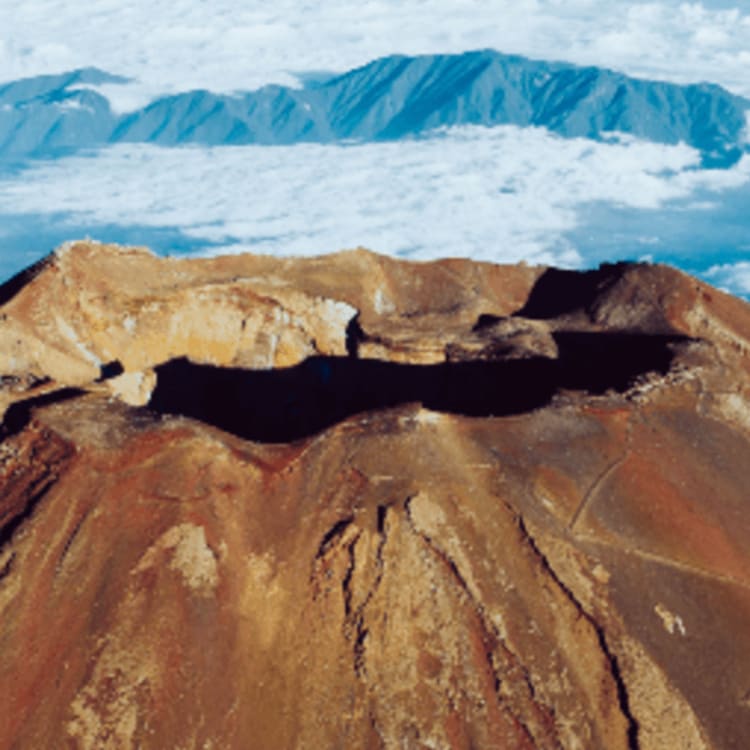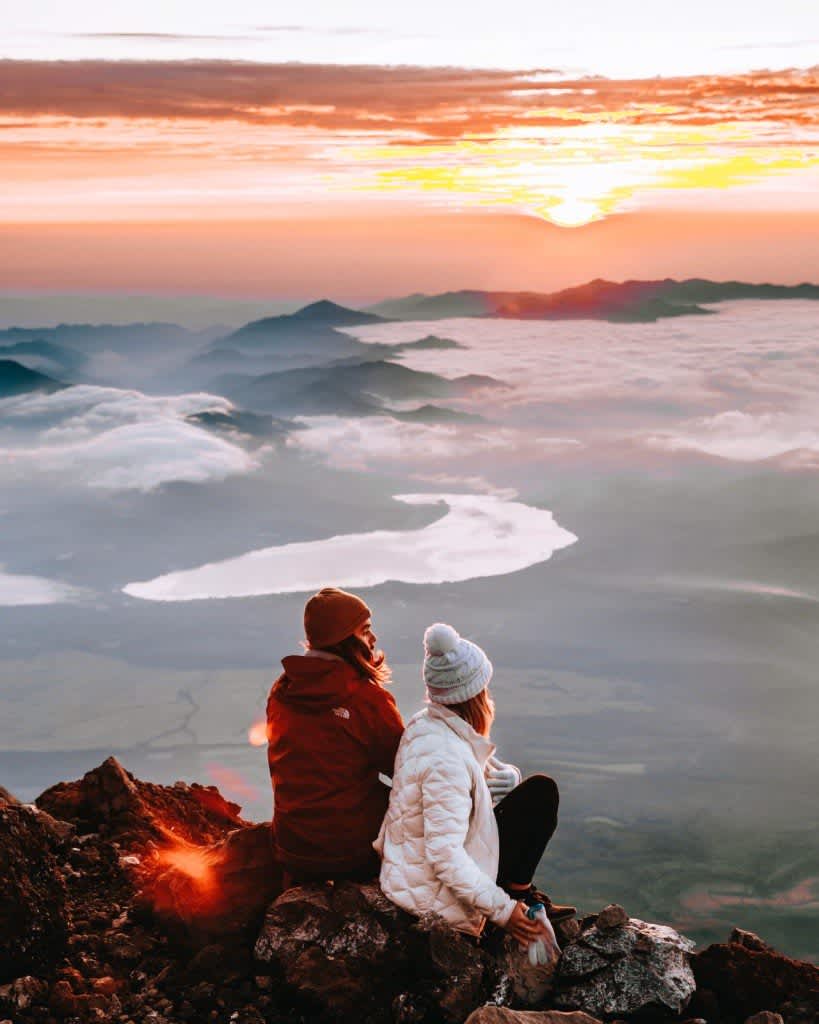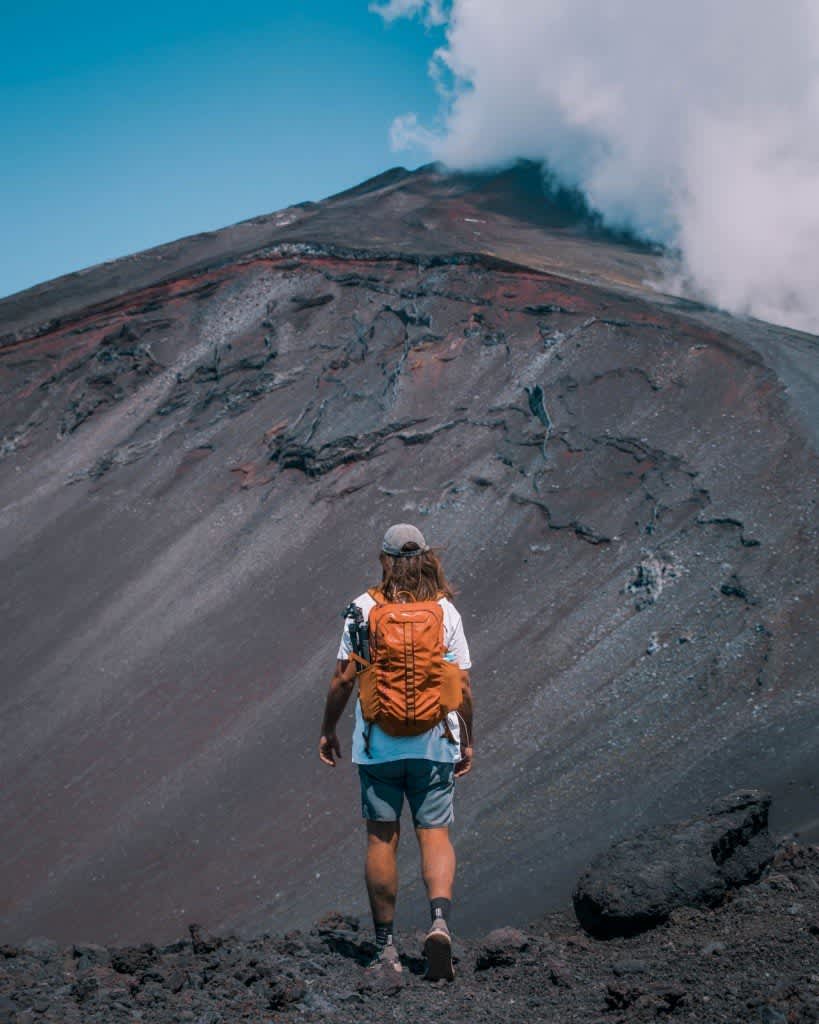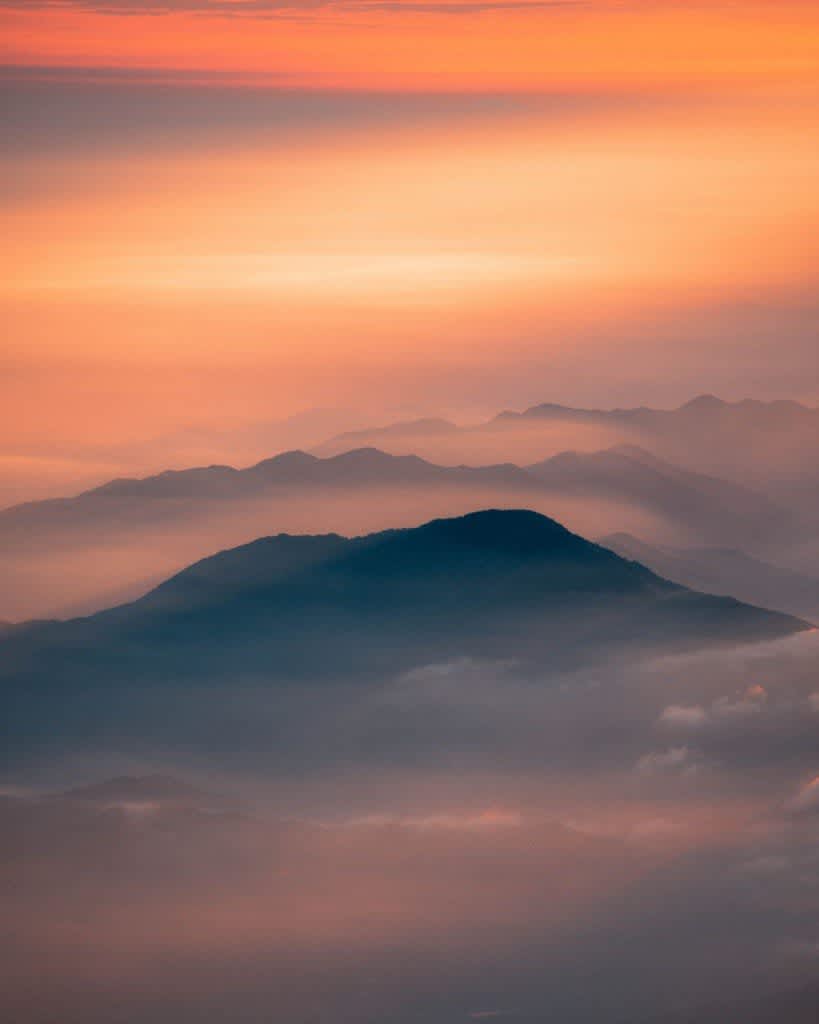
Guide Climbing Mt. Fuji: The top recommended itinerary
We sent Aussie adventurers, Hayley and Kyle, to climb Mt Fuji for the first time! Taking two days in total, including a night spent up on the mountain, the fun-loving duo returned with a wealth of experiences and recommendations they want to share with you!
Overview
This recommended itinerary takes place over 2 days. On the first day, the hike begins from the Fujinomiya 5th station (2,400m) and goes up to Akaiwa Hachigo mountain hut (3,300m) located at the 8th station where you rest for the night. This first climb is around 4km and will take most of the day.
On the second day, the final ascent to the top of Mount Fuji starts early in the morning and finishes with the descent back down to the 5th station.
Note: The Fujinomiya trail begins at 2,400 meters and is the shortest in distance to reach the top, but is also steeper and rockier in comparison to other trails (Yoshida, Gotemba and Subashiri). The duration of the ascent depends on many variables including weather conditions, route conditions, temperature and fitness level.

Itinerary
DAY 1
8:30–9:30am | Arrive at Mt. Fuji Fujinomiya 5th station
9:30–10:30am | Begin ascent on Fujinomiya route
On a clear day you will be rewarded with views of the Pacific and surrounding mountains, including Hakone and Lake Ashi. Be sure to take as many rests as needed to give your body time to slowly adjust to the change in altitude.
3:00–5:30pm | Arrive at 8th station Akaiwa Hachigo mountain hut
Once you reach the 8th station, enjoy a hot meal and get ready for bed. The hut is quiet compared to huts on other trails, however it is far from the Hilton. You’ll be sleeping on Japanese futons in a bunk (mixed gender) that can get quite crowded—all part of the experience!

DAY 2
1:00–3:00 am | Rise and shine
1:30–3:30 am | Depart hut for Mt. Fuji peak
This final twilight climb offers a secluded, spiritual experience, offering you a stunning sunrise over the clouds. The summit of Mt. Fuji is approximately a 2 hour climb from Akaiwa Hachigo at a relaxed, steady pace.

3:30-5:30 am | Arrive on Mt. Fuji peak
The sunrise atop Mt. Fuji is known as goraiko or "Buddha's Halo". The sun gradually appears in dazzling shades of purple, pink, and orange over the sea of clouds that Japanese call "the ocean of cotton". Various temples, shrines, and torii gates scatter the large dominating crater on the summit. After you’ve admired the sunrise, spend an hour following the circuit of the mountain’s 8 peaks, including the 3,776m above sea level peak, Kengamine, the highest point in Japan.

5:30-7:00 am | Descent to Fujinomiya 5th station
The descent takes about half the time but still requires significant effort due to the steepness. We recommend stopping by Akaiwa Hachigo for breakfast or to pick up any excess luggage you might’ve left.
10:00-1:00 pm | Arrive at Fujinomiya 5th station
You did it! Now onto your next destination!
Q and A
Hayley and Kyle answered some questions that should help you out if you decide to do the climb yourself. View the excerpt below, or check out Hayley and Kyle’s blog for the full Q&A here!
Do I need a guide?
Now, it’s not compulsory to have a guide, but it’s highly recommend having one. The trails can be confusing and easily mistaken if you’re on your own. Guides will also help with communicating between the locals at each station, as a lot of the Japanese don’t speak English.
We had a guide the entire time and felt he was extremely helpful with adjusting to the altitude, guiding us along the best trails and of course making sure of our safety. We booked our guide here.
How do I book a mountain hut?
Firstly you want to find the hut you would like to stay in. Preferably the highest hut along the trail you wish to follow. Here is a list and information of all the mountain huts.
Note: most mountain huts are only open during the official climbing season.
Secondly, you will need someone to book the hut who speaks Japanese, as majority of the staff at mountain huts don’t speak English. This could be a hotel receptionist, or your guide if you decide to take a guided tour.
Thirdly, you want to try book in advance if you are climbing over a weekend. The price is approx. 9000 yen including dinner and breakfast.
What is it like sleeping in a mountain hut?
Some of the huts can sleep up to 100+ people, leaving you only a tight sleeping space of only 1m. If you’re a light sleeper, make sure to pack an eye mask and ear plugs to help you sleep as it is loud throughout the night. You are provided dinner and breakfast which is usually a serving of curry and rice. If you are vegetarian, you will have to bring your own options.
There is no tap water on site, so washing your hands or face, or refilling your water bottle isn’t possible. If you need more water you will need to purchase bottled water at the hut.
What’s the best time to climb?
Mt Fuji is only open to hikers between early July to early September, and peak time being on weekends. These dates are due to the weather conditions being safe for travellers.
How much does it cost to do the climb?
While it doesn’t officially cost to climb the mountain, a donation towards the conservation of the mountain will be requested if you go beyond the 5th or 6th stations. 1,000 yen is usually the amount that is donated but you can donate more if you wish. It is also advisable to bring a handful of 100 yen coins as the toilets are not free to use.
What should I pack?
- Water
- Weatherproof pants, jacket and shoes
- Head torch
- Thick breathable socks, beanie and gloves
- Sun protection (sunscreen, glasses and hat)
- Lip balm, ear plugs, eye mask, face wipes
- Panadol and basic first aid
- Small garbage bags for rubbish
- 100 yen coins for bathroom
- Snacks (food for dinner if vegetarian)
- Spare clothes
Thinking of climbing Mt Fuji? Plan your trip today!



















































